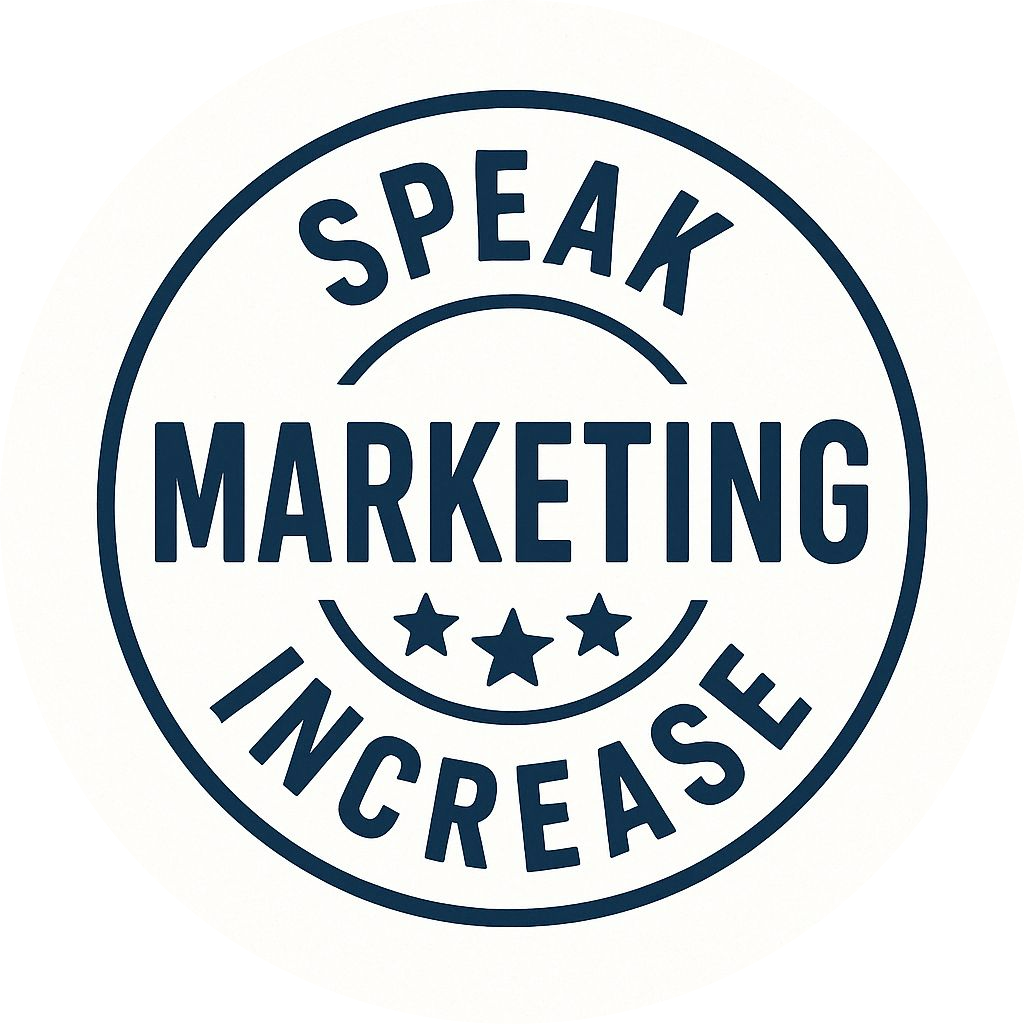Did you know that email marketing generates an astonishing average ROI of $42 for every $1 spent? It consistently outperforms all other digital marketing channels. If you’re ready to accelerate your sales, increase your brand’s reach, and convert leads into loyal customers, mastering email marketing is your essential competitive advantage. In this guide, you’ll uncover expert strategies, top marketing tools, and the actionable steps needed to turn your email subscribers into sales—fast.
Unleashing the Power of Email Marketing for Rapid Sales Growth

Did you know: Email marketing delivers an average ROI of $42 for every $1 spent—outperforming all other digital marketing channels?
Email marketing is more than just sending messages; it's a top-performing marketing tool that drives revenue and builds long-term relationships. Unlike fleeting trends on social media, an effective email marketing campaign lands directly in your customer’s inbox, making it personal, direct, and highly measurable. By leveraging properly segmented email lists , personalizing marketing emails , and optimizing open rates, you gain a reliable channel for engaging your audience and increasing conversions.
Modern email marketing platforms enable you to automate campaigns, run A/B tests on subject lines , and track your open rate and click-through rates in real-time. Powerful marketing software makes it simple to nurture leads throughout the sales funnel, whether you’re launching a product, sending a newsletter, or upselling to existing customers. For businesses of any size, tapping into the power of email marketing services can deliver tangible, rapid sales growth—often ahead of paid social or search channels.
What You'll Take Away From This Guide on Email Marketing
- How email marketing accelerates sales
- Essential strategies for building an effective email campaign
- Choosing the right email marketing service and tools
- Crafting high-converting email templates with attention-grabbing subject lines
- Analyzing key metrics to boost your marketing success
Understanding Email Marketing: Core Concepts Every Business Needs
What is Email Marketing and Why Does it Work?

Email marketing is the practice of sending targeted messages using email to a group of subscribers who have opted into your content or offers. It’s effective because it leverages permission-based communication via a direct, personal channel—their inbox. Unlike other marketing tools that fight for fleeting attention on crowded social media feeds, well-constructed email campaigns command higher engagement, including better open rates and click-through rates. This direct-touch approach nurtures leads, supports sales, and builds brand loyalty far beyond what you achieve on most other platforms.
The key to successful email marketing campaigns lies in delivering value to your audience. Whether it’s through special offers, educational content, or personalized recommendations, you build trust every time a subscriber receives a relevant, well-timed marketing email . Data shows that customers are more likely to open and act on emails from brands they trust, making email marketing an essential pillar in any comprehensive marketing strategy .
How Email Marketing Integrates with Modern Marketing Service Approaches
Modern businesses rarely rely on a single marketing service . Instead, email marketing thrives as a core part of an integrated digital ecosystem, working alongside social media , search engine marketing, and paid advertising to amplify impact. Through automated triggers and carefully timed sequences, emails can nurture leads generated from other channels or reignite interest among previous customers.
Advanced email marketing platforms and software now enable seamless integrations with CRMs, e-commerce sites, and analytics dashboards. This means every email campaign can be personalized using customer data, ensuring the right message reaches the right person at the perfect time. By embedding email marketing services within your broader marketing strategy , you’ll transform passive subscribers into active sales opportunities and ambassadors for your brand.
Setting Up for Success: Building Your Email List and Selecting the Best Email Marketing Service
Strategic Ways to Build an Engaged Email List
A high-quality email list powers every successful email marketing campaign . Start by offering compelling lead magnets—like discounts, exclusive guides, or valuable content—in exchange for visitors’ email addresses on your website and landing pages. Segment your email list based on demographics, behaviors, or buying history so your marketing emails can deliver exactly what each subscriber seeks.
Use pop-ups, signup forms on blog posts, and calls-to-action throughout your social media to capture new subscribers. Always strive to collect permission-based email addresses to maintain compliance and maximize future email engagement. Regularly clean your email list to remove inactive contacts, which improves your sender reputation and ensures your open rate remains high.
Evaluating and Choosing Email Marketing Service Providers
Selecting a reliable email marketing service is crucial for scaling outreach and automation. Consider features such as list segmentation, deliverability rates, drag-and-drop email templates , real-time analytics, and automation workflows. Some top marketing platforms offer unique integrations or specialty tools tailored for e-commerce, event marketing, or educational content delivery.
Look for user-friendly interfaces and responsive customer support. Evaluate your options with a free trial and compare details like analytics dashboards, compliance with privacy regulations, and integrations with existing marketing tools . Well-known providers include Mailchimp, Constant Contact , ActiveCampaign, and ConvertKit—each with strengths in different areas and price points to match a variety of business needs.
Top Email Marketing Platforms and Software Compared
| Email Marketing Platform | Key Features | Starting Price | User Rating (out of 5) |
|---|---|---|---|
| Mailchimp | Automation, segmentation, drag-and-drop builder, integrations | $13/month | 4.5 |
| Constant Contact | Simple templates, autoresponders, list building tools, support | $12/month | 4.4 |
| ActiveCampaign | Sales automation, advanced personalization, CRM syncing | $29/month | 4.7 |
| ConvertKit | Intuitive builder, creator-focused tools, automation rules | $15/month | 4.3 |
Developing High-Impact Email Campaigns: From Strategy to Execution
Mastering Email Campaign Creation: Segmenting, Scheduling, and Personalizing

A successful email marketing campaign begins with detailed audience segmentation. Divide your email list based on actions, engagement levels, or demographics to ensure each marketing email delivers relevant content. Scheduling emails at optimal times boosts open rates ; research shows midweek mornings often yield the best results, but always analyze your audience data for custom insights.
Personalization is more than inserting a first name. Leverage your email marketing software to reference past purchases, tailor recommendations, or acknowledge significant dates. Automated email campaigns —triggered by behavior, such as cart abandonment or browsing activity—strengthen customer connections and drive conversions. Smart segmentation, combined with personalized scheduling, sets a foundation for higher engagement and rapid sales growth.
Choosing Compelling Subject Lines to Increase Open Rates
"The subject line is your campaign's first impression—make it count!"
The subject line is one of the most critical elements in any email campaign . It determines whether your marketing email gets opened or goes straight to the trash. To improve open rates , craft short, specific, and curiosity-driven subject lines . Avoid spammy words, and test emojis when appropriate. According to industry benchmarks, a personalized subject line can boost open rates by up to 26%.
Use A/B testing to compare different subject lines and refine your approach. For example, test urgency-driven lines like “Last chance to save!” against value-driven ones such as “Unlock your exclusive guide.” Monitor your open rate for each test and adjust future campaigns to reflect subscriber preferences. Over time, refined subject lines can dramatically increase the success of your email marketing campaigns .
Best Practices for Email Templates: Design and Content Principles

Effective email templates combine eye-catching design with clear, actionable content. Start with mobile-responsive layouts—over half of all emails are opened on a mobile device . Use a single-column design, large call-to-action buttons, and short paragraphs for readability. Ensure your branding is consistent across all communications, from logo placement to color schemes.
Clear calls-to-action, compelling visuals, and personalized content make marketing emails stand out in crowded inboxes. Keep sentences concise and place your most important message “above the fold.” Make use of preview text to supplement the subject line and encourage opens. By following these design and content principles, your email templates will drive more engagement and conversions.
A/B Testing in Email Campaigns: Optimize for Higher Open Rates and Clicks
A/B testing allows marketers to experiment with different elements—such as subject lines , email copy, images, or calls-to-action—to determine which combinations lead to the best results. Start by testing one variable at a time. For instance, send two versions of a marketing email to equal segments of your list: one with a question in the subject line , and another with a statement.
Analyze open rates , click-through rates, and conversions to discover which version performs best. Implement the successful elements into future email campaigns and continue iterating for ongoing improvement. Consistent A/B testing informs your email marketing strategy and helps you maximize the ROI of every campaign.
Selecting the Right Marketing Tools for Email Success
Essential Marketing Software for Email Marketing Campaigns

Great email marketing relies on powerful marketing software that simplifies complex tasks like automation, list management, and analytics. Look for a platform with intuitive campaign builders, strong integration capabilities, and reliable tracking tools. Modern marketing tools also enable customizable automation flows—sending specific marketing emails based on subscriber actions or life-cycle stages.
Advanced email marketing software integrates seamlessly with CRM systems, social media, and e-commerce stores , offering a unified view of your marketing efforts. When all marketing tools connect, you’ll be able to personalize content, track engagement across channels, and attribute sales to specific email marketing campaigns accurately.
Integrating Marketing Tools with Your Email Marketing Platform
Integrating your email marketing platform with other marketing tools is the key to a streamlined, data-driven operation. Sync your CRM with your email marketing service to update contact records automatically. Link your social media analytics to identify what inspires your followers to sign up or engage with your email campaigns , allowing for targeted follow-ups.
E-commerce integrations enable you to send tailored product recommendations or abandoned cart reminders, directly boosting sales. By consolidating your marketing software stack, you create smarter, more effective campaigns—ensuring nothing falls through the cracks and every lead receives a consistent, personalized experience.
Maximizing Results: Analyzing Key Metrics and Performance in Email Marketing
How to Track Open Rate, Click-Through Rate, and Conversion Rate
Tracking open rate , click-through rate (CTR), and conversion rate are fundamental for assessing the performance of your email marketing campaigns . The open rate reveals how many subscribers viewed your message—often influenced by subject line quality and timing. CTR highlights the percentage who clicked a link, indicating the relevancy and strength of your call-to-action.
Your conversion rate tracks how many recipients completed a desired action, like making a purchase or filling out a form. Use your email marketing software to monitor these metrics automatically. Regular analysis helps you tweak subject lines, content, and design for tangible improvements in future campaigns, steadily raising your ROI.
Advanced Reporting: Using Data to Refine Your Email Marketing Strategy
Dig deeper by deploying advanced reporting features in your marketing software . Explore metrics like bounce rate, unsubscribe rate, forwarding/share ratios, and device breakdown (e.g., mobile device vs. desktop). These insights help you identify bottlenecks—for example, if your open rate is high but CTR is low, you may need stronger calls-to-action or more engaging visuals.
Set benchmarks for each campaign type and continually compare results. Adjust segmentation, scheduling, or message formats according to what your audience responds to best. The data-driven approach is essential: constant optimization ensures your email marketing strategy evolves and delivers the best possible results.
| Metric | Definition | Industry Average Benchmark |
|---|---|---|
| Open Rate | Percentage of delivered emails that are opened | 20–25% |
| Click-Through Rate (CTR) | Percentage of recipients who clicked links | 2–5% |
| Conversion Rate | Percentage who completed the desired action | 1–3% |
| Bounce Rate | Percentage of emails not delivered | <2% |
| Unsubscribe Rate | Percentage who opted out of the list | <0.5% |
Improving Email Deliverability and Avoiding Spam Filters

Deliverability is the backbone of any email marketing campaign . If your messages aren’t landing in inboxes, your open rate and ROI will suffer. To avoid spam filters, always use confirmed opt-in methods and never buy lists. Personalize the subject line , include clear unsubscribe links, and maintain a balanced image-to-text ratio.
Regularly authenticate your sending domain using SPF, DKIM, and DMARC records, and monitor your sender reputation scores. Remove inactive or bounced emails frequently. By prioritizing these best practices, you ensure your marketing emails reach eager subscribers instead of being lost in spam folders or blocked outright.
Real-World Examples: Proven Email Marketing Campaigns Driving Sales
Case Study: Boosting Sales with Automated Email Sequences
Consider an e-commerce brand that implemented automated welcome and follow-up email sequences . By segmenting their email list based on shopper behavior and using dynamic email templates , they provided new subscribers with tailored onboarding content. Cart abandonment workflows captured lost revenue, while exclusive discounts in marketing emails drove urgency and increased conversions.
The result? The brand saw a 34% increase in average order value and a 17% rise in customer retention. Automated email marketing campaigns allowed their team to nurture leads 24/7 without manual intervention—showcasing the power of smart email marketing software for sustainable sales growth.
Before and After: The ROI Impact of a Modern Email Marketing Service
"Automation in email marketing doesn't just save time—it multiplies conversions."

A SaaS company struggled with low open rates and poor engagement on their legacy platform. After switching to a modern email marketing service with stronger marketing automation and A/B testing tools, they revamped their subject lines and list segmentation. Within three months, open rates doubled, click-through rates jumped by 73%, and their return on investment (ROI) soared.
This transformation underscores how the right marketing software and disciplined strategy can revolutionize results—it's not just about sending emails; it's about sending the right emails powered by data and best practices.
Smart Strategies for Email Marketing: Growing Revenue with Personalization and Automation
Harnessing Personalization for Higher Engagement

The era of generic marketing emails is over. Today’s subscribers expect messages tailored to their interests and actions. Using dynamic content blocks, you can personalize not just names, but offers, product recommendations, and images—matching each email address with the content that matters most to the recipient.
This level of personalization fosters higher engagement, longer-lasting customer relationships, and—most importantly—improved sales outcomes. Successful brands use marketing automation to dynamically adjust email templates based on real-time data, showing customers you understand and value their unique needs and journey.
Implementing Drip Campaigns for Nurturing and Retention
Drip email campaigns send a series of pre-written messages over time, automatically triggered by subscriber behavior or lifecycle stage. For example, a new signup might receive a welcome sequence with helpful resources, followed by a special offer a week later. Existing customers can get re-engagement content or rewards for loyalty.
Drip campaigns are an excellent way to nurture leads who aren’t ready to buy immediately and to drive repeat purchases from your email list . Most modern email marketing platforms offer simple workflows for automating these sequences, maximizing both engagement and revenue with minimal manual effort.
Upselling and Cross-Selling via Targeted Marketing Email Sequences
Once a subscriber makes a purchase, your next goal is to increase their lifetime value. Use targeted email sequences to upsell premium versions of purchased items or cross-sell related products. For instance, an electronics store might recommend accessories to customers who just bought a new phone.
Segment your email list so you only send these marketing emails to customers whose past actions indicate interest. Personalized, well-timed upsell and cross-sell campaigns are proven to generate significant additional revenue and cement your brand as the go-to provider for related needs.
Best Practices: Compliance, Permissions, and Maintaining a Healthy Email List
Email Marketing Laws: GDPR, CAN-SPAM, and Respecting Subscriber Privacy

Compliance is non-negotiable in email marketing . Laws like GDPR, CAN-SPAM, and CASL mandate transparent data use, explicit consent, and clear privacy policies. Always include a visible unsubscribe link, never use deceptive subject lines , and honor all opt-out requests immediately for every marketing campaign .
Respecting subscriber privacy doesn’t just keep you legal—it also builds trust and boosts open rates over time. Maintain clear records of consent, update your terms of service as needed, and avoid purchasing or renting third-party email lists which tend to result in high bounce and unsubscribe rates while risking hefty fines.
Effective List Hygiene: Removing Inactive or Unengaged Subscribers
Routinely cleaning your email list —known as list hygiene—is vital for maximizing deliverability and engagement. Identify subscribers who haven’t opened or clicked on marketing emails in several months, then send a win-back campaign to gauge further interest. If there’s no interaction, remove these contacts to protect your sender reputation and improve key metrics.
A healthy list increases accuracy of segmentation, results in better open rates , and lowers your costs—most email marketing software charges by list size. Consistent list hygiene ensures your email marketing campaigns are targeted only to actively engaged subscribers.
Balancing Automation with Authenticity in Marketing Campaigns
While automation saves time and allows for sophisticated email campaigns , it’s important to maintain an authentic, human tone in your communications. Segment automated sequences so they feel timely and relevant. Avoid overuse of canned language, and periodically include genuine messages from team members or the business owner.
Authenticity helps your emails stand out in crowded inboxes and reinforces the personal connection that email marketing is uniquely poised to nurture. Always strive for balance—let automation handle repetitive tasks, freeing you up to add that human touch where it matters most.
Next-Level Email Marketing Tools and Innovations for 2024
AI-Powered Marketing Software: Personalization at Scale

Artificial intelligence (AI) is revolutionizing email marketing software , making possible the sort of hyper-personalization that was previously out of reach. AI tools can analyze user behaviors, predict best send times, and customize email content for each recipient at scale. From dynamic subject lines to retargeting lapsed shoppers, AI is shaping the future of email marketing campaigns .
By adopting AI-powered solutions, marketers can automate segmentation, learn from engagement patterns, and send smarter marketing emails that drive higher open rates and conversions. Expect 2024 to bring even more integration of AI with marketing automation , delivering improved efficiency and creative opportunities at every stage of the customer journey.
Integrations: Connecting Email Marketing Platforms with E-commerce and CRMs
Seamless integrations are essential for leveraging the full potential of your email marketing platform . Connect your email tool with your e-commerce backend to enable abandoned cart reminders, product recommendations, and purchase follow-ups automatically. CRM integration empowers you to map the complete customer journey, sync data, and create advanced segments for precisely targeted email campaigns .
The best email marketing services now offer one-click integrations with popular shopping carts, payment gateways, and customer databases, removing manual work and ensuring timely, relevant communications across all stages of your marketing strategy .
Future Trends: What’s Next for Email Marketing Strategies
"Innovation in marketing tools transforms how brands connect and convert."
Upcoming trends include growing use of interactive emails—where subscribers can shop, RSVP, or complete surveys directly inside the message—plus more robust privacy tools that protect user data while increasing personalization. As marketing tools continue to integrate AI insights and real-time feedback, marketers can react more quickly to engagement dips and design experiences that reflect evolving customer behaviors.
Emphasizing both privacy and hyper-personalization will set top brands apart, making email marketing not just a communication tool, but a dynamic, conversion-driving experience well into the future.
Common Challenges in Email Marketing (and How to Solve Them)
Combatting Declining Open Rates and Inbox Placement
Declining open rates are a common obstacle. To counter this, continually refine your subject lines with A/B testing and segment campaigns more granularly based on past engagement. Use email marketing software to monitor deliverability, recommend optimal send times, and adjust content for mobile-first experiences.
Authenticate your domain and monitor spam complaints to maintain strong inbox placement. Clean your email list regularly to remove unresponsive email addresses , as they can signal ISPs to re-route your future marketing emails into spam folders.
How to Revitalize an Underperforming Email Marketing Campaign
If your email marketing campaigns miss expectations, revisit your segmentation strategy and refresh your email templates and content. Ask subscribers what types of content or offers most interest them via a quick poll. Try sending at different times of day or week, and experiment with new designs, themes, or interactive elements.
Examine your analytics for drop-off points—whether during subject line scanning, content preview, or final CTA. Tweak accordingly each step, keep testing, and track improvements as you go. Successful marketers treat every campaign as a chance to iterate and get closer to what their audience values most.
Handling Unsubscribes Gracefully: Retaining Value and Relationships
Unsubscribes are inevitable in any long-term email marketing campaign , but each opt-out is an opportunity for feedback. Include a brief, friendly goodbye message asking why subscribers are leaving or how you can improve. Offer options to reduce frequency instead of unsubscribing outright.
Analyze unsubscribe trend data carefully—spikes might indicate issues with content, timing, or subject matter. By refining your marketing strategy based on honest feedback, you enhance your campaigns and retain more value and trust from remaining subscribers.
Elevating Your Marketing Strategy: The Role of Email in Multichannel Campaigns
Connecting Email Marketing to Social Media and Paid Advertising

Integrating email marketing with social media and paid advertising amplifies your reach and message consistency. Use marketing tools to promote email signups on Facebook, Instagram, or LinkedIn. Retarget your email list with social ads for critical campaigns, or leverage lookalike audiences to expand your acquisition efforts.
Syncing these channels allows for a more robust customer journey. Subscribers who see your offers in their inbox, feed, and search results are far more likely to engage and convert, as your brand becomes familiar and top-of-mind across multiple touchpoints.
Creating Cohesive Customer Journeys with Marketing Tools
A seamless multichannel experience means your emails align with the messages, timing, and offers shown on other platforms. The best marketing software integrates scheduling calendars, conversion tracking, and personalization data, ensuring smooth handoffs between email marketing , social media , and paid ads.
By coordinating email campaigns with the rest of your marketing strategy , you nurture leads through every sales stage—from initial contact to repeat purchases—while reducing friction and boosting satisfaction.
People Also Ask: Answers to Key Email Marketing Questions
How do you do email marketing?
Start by choosing an email marketing software or service that fits your goals. Build your email list with opt-in strategies, and segment based on demographics or behaviors. Design personalized email templates , set up automated campaigns, and craft engaging subject lines . Continually test and optimize for the best open rates and conversions.
Step-by-Step Guide to Starting Effective Email Marketing
1. Select a reputable email marketing platform 2. Build and clean your email list 3. Segment your audience 4. Design responsive email templates 5. Set up automation flows 6. Analyze campaign metrics and improve This approach unlocks the full power of email marketing in your business growth strategy.
How much is a 1000 email list worth?
The value of a 1,000-subscriber email list depends on your industry’s average conversion rates and customer lifetime value. With healthy open rates and engaged subscribers, even modest-sized lists can generate thousands in revenue per campaign. List quality and engagement are more important than sheer size—active subscribers yield greater ROI.
Evaluating the Value of Your Email List Based on Engagement and ROI
Measure list value by tracking conversions, repeat sales, and the average revenue generated per recipient. Use your email marketing software analytics to benchmark performance over time. Lists with higher engagement—measured by open rates , CTR, and low unsubscribes—are more valuable and drive greater long-term business growth.
What is the 80 20 rule in email marketing?
The 80/20 rule suggests that 80% of outcomes result from 20% of actions. In email marketing , focus your efforts on the top 20% of subscribers—those who engage most often. Targeting these super-engaged users with special offers or personalized content can generate a disproportionate share of your revenue.
Understanding and Applying the 80/20 Rule in Email Marketing Campaigns
Analyze your email list to find your top openers and clickers. Nurture these frequent engagers with exclusive marketing emails or tailored rewards. At the same time, seek ways to re-engage or clean lower-performing segments, so every message you send has maximum impact.
What are the 5 T's of email marketing?
The five T’s stand for Target, Tease, Teach, Test, and Track. Together, these guide every successful email marketing campaign —target the right audience, tease with curiosity-driven subject lines , teach with valuable content, test various strategies, and track your results to optimize performance.
Exploring the Five T’s: Target, Tease, Teach, Test, and Track in Email Marketing
By applying the 5 T’s, marketers ensure their email campaigns deliver relevant content that educates, entertains, and persuades recipients—while leveraging data and experimentation to continually improve. This structured approach builds consistency and ROI for all your email marketing efforts.
Essential Email Marketing FAQs
- How often should I send marketing emails? Aim for consistency, such as weekly or biweekly, but monitor engagement to avoid fatigue.
- What are the best days/times to launch an email campaign? Midweek mornings often perform best, but test to find your audience’s unique preferences.
- How do I avoid spam filters? Use permission-based lists, authenticate your domain, and maintain clean list hygiene to improve inbox placement.
- Which email marketing software is right for my business? Choose based on features you need, such as automation, analytics, and integrations.
- Can I automate email marketing without losing personalization? Yes, by using dynamic content, personalization tags, and behavior-based automation flows.
Key Success Guidelines for Effective Email Marketing
- Always deliver value and relevance
- Build and segment a high-quality email list
- Test, tweak, and optimize every campaign
- Leverage automation for efficiency
- Stay compliant and respect subscriber preferences
Accelerate Growth: Make Email Marketing Your Top Sales Channel Today
Transform Your Business with Proven Email Strategies—Start Now!
Take action today: Choose your email marketing service, build your segmented list, and launch your next campaign. Email marketing is your most direct path to sustainable, scalable sales. Let these proven strategies guide your next step—your best customers are waiting in their inbox!
 Add Row
Add Row  Add
Add 




Write A Comment